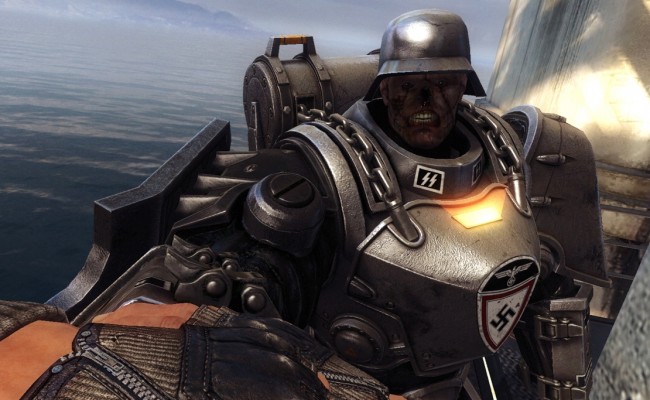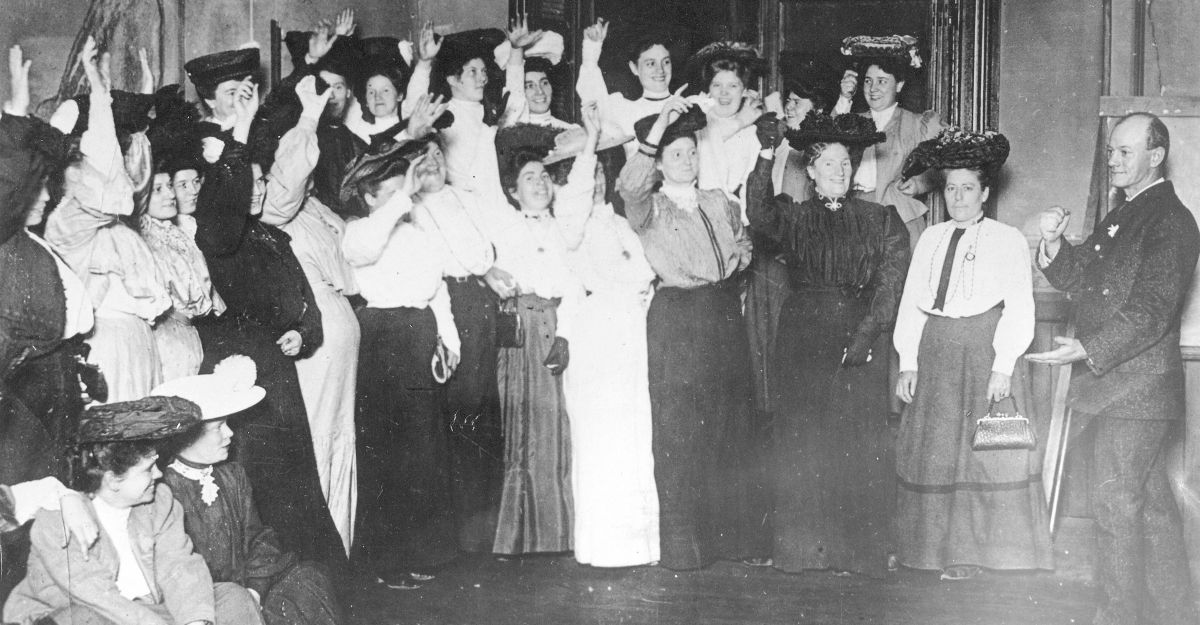When Id Software’s Wolfenstein 3D was released in 1992, it birthed video games’ most paradoxical genre: the first-person shooter. In such games, the player looks through the eyes of the playable character, walking not to the side of a stage but into a world. A machine gun protrudes from the bottom of the screen, extending the player’s limbs into the pictorial space of the screen like the columns of a Baroque ceiling painting. As the player-and-character navigates its labyrinthine, three-dimensional, levels turning left and right, they bring Nazis and their dogs into view … and blast them away.
In the twenty-two years since, the first-person shooter has become the medium’s most inventive and most stagnant design. A lot has changed – and a lot hasn’t. The potential and limitations of the first-person perspective, which gives the player a bodily presence and intimacy with a world, has been stretched in countless directions, from the vast open worlds of Skyrim and Fallout to the more directed, ‘on-rails’ adventures of Half-Life and Modern Warfare. But such diversity is held back by homogenisation: there’s only so many stories to be told about a man (and, while the character is invisible, it is still more often than not a man) whose primary engagement with a world comes through the barrel of a gun.
Which perhaps makes Machinegames’s Wolfenstein: The New Order less of an enigma than it first seems. In The New Order’s alternative universe, the Nazis won the Second World War and used stolen ancient Jewish/Alien technology to create terrifying robots and monolithic towers. It is, of course, up to playable character William ‘BJ’ Blazkowicz, a man with a neck wider than his head, to right things and save the world.
It’s a corny setup – but one the game approaches with unwavering confidence. What feels at first like a conservative and contrived paint-by-numbers cash-in on a known franchise slowly unfurls into a refreshingly confident commitment to story and character. To be sure, this is a story that consists of killing Nazi robots on the moon, and a protagonist that unironically says things like, ‘Wake up, you’re dead’ to the sleeping Nazi guard that he just stabbed. But it also invokes a real, emotional commitment to these characters and their plights through considered dialogue and world-building.
The New Order is a hot mess – and proud of it.
To understand why The New Order is so delightful is to first understand why it probably wasn’t going to be. In video games, franchises work much as they do in comics. Just as there will always be another Batman comic (and movie and cartoon and action figure) there will always be another Wolfenstein, another Final Fantasy, another Grand Theft Auto. Video games cost a lot of money to make, and a known franchise is always a safer bet for a publisher than a new intellectual property. Video games are, at their heart, about repetition and familiarity: players learn rules and conventions and repeat movements over and over; computer programs churn through code and pull up multiple instances of objects over and over. Rigid, repeated genre conventions almost become a natural fit to video games, giving a franchise’s player a base vocabulary and rule set from which they can start (and a studio the ability to not re-create the wheel every new game). Every Grand Theft Auto will be different, but its basic vocabulary of an open-world game full of vehicles to steal will always persist. From the persistence of franchises, to the repetition of character models, to narrow genre conventions, seriality is core to video games. That is to say: there was always going to be another Wolfenstein, and it was always going to be an FPS where you shoot lots of Nazis.
It’s for this reason, I think, that I’ve seen so many people claim The New Order is ‘better than it should be’ or ‘better than it deserves to be’. People know what a new Wolfenstein has to be, how it must be held back, and their expectations are lowered. I am no exception: I expected a derivative, straightforward romp down corridors shooting Nazis. When people started claiming the game hit real emotional chords through grim depictions of labour camps and believable sexual relationships, I was skeptical.
That is, until, I discovered who made the game. The New Order is not developed by the franchise’s original developers but by Machinegames, a studio formed by former members of Starbreeze, and responsible for Starbreeze’s very particular oeuvre of first-person shooters across their The Chronicles of Riddick and The Darkness series. These games have a weirdness about them, an eccentricity, a hodgepodge-ness. An example: in The Darkness, you blast gangsters on the streets of New York (as in any other shooter), and then you go home to your girlfriend’s apartment, sit on the couch, and start watching 1962’s To Kill A Mockingbird. Through the eyes of your character, you look at the small TV, your girlfriend’s head on your shoulder. To continue the game, you must get up, walk over to the telephone, and accept your next mission. Or, you can just sit there for hours and watch the whole film.
Starbreeze’s games are pure, generic pulp, but they have these brave and deeply-moving design decisions (like allowing the player to just sit on the couch and watch a film with their character’s partner) that imbue them with a gravity, a sense of place and rounded character that few first-person shooters can boast.
The New Order is no different. Within the pulpy genre of the first-person Nazi-shooter, there are moments of real heart and real drama. The game will throw BJ into a Nazi prison, from which he will single-handedly blast his way out through all the guards to save one prisoner. But then it will place him in the rebel headquarters hidden under Berlin, rounding up the toys for an infantile, brain-damaged giant of a man and returning them, quietly, to the man’s room while he naps. These quieter moments give the different characters a chance to speak, allowing us to learn something about them, their lives, their pasts, their hopes and dreams and fears. At one moment, you are stomping through a Nazi labour camp in a giant robot to free prisoners. The next, you are woken in the middle of the night to listen to another character’s monologue on the very nature of existence. Or, maybe, you are doing acid with Jimi Hendrix (who, in this world never havd the chance to become a rock star), and listening to him explain that the racism of the US before the war makes BJ a hypocrite for hating the Nazis. Then you are holding two shotguns, fighting a giant robot, as BJ whispers, ‘I’m coming for you, you fucking Nazi space man.’
There was always going to be a new Wolfenstein – and it was always going to be about shooting Nazis. Machinegames has taken that inevitability and combined it with the simple and straightforward storytelling techniques that too many video games disregard (pacing, down-time, character development) to create what is, at once, the most conventional and most refreshing game we could have expected. It’s a game of contradictions: in tone, in style, in aesthetics. It’s a game that plays the corniest faux-Rammstein guitars over an action scene and then a single, melancholy woman whispering over the final credits. It’s a game that has its cake and eats it too – and licks the crumbs off the plate.
It is, ultimately, a game that is confident and comfortable, taking on a new aesthetic before tossing it aside for another one five minutes later. The New Order is not ‘so bad it’s good’ and it’s not ‘better than it deserves to be’. It accepts what it has to be and does what it can within those constraints.



